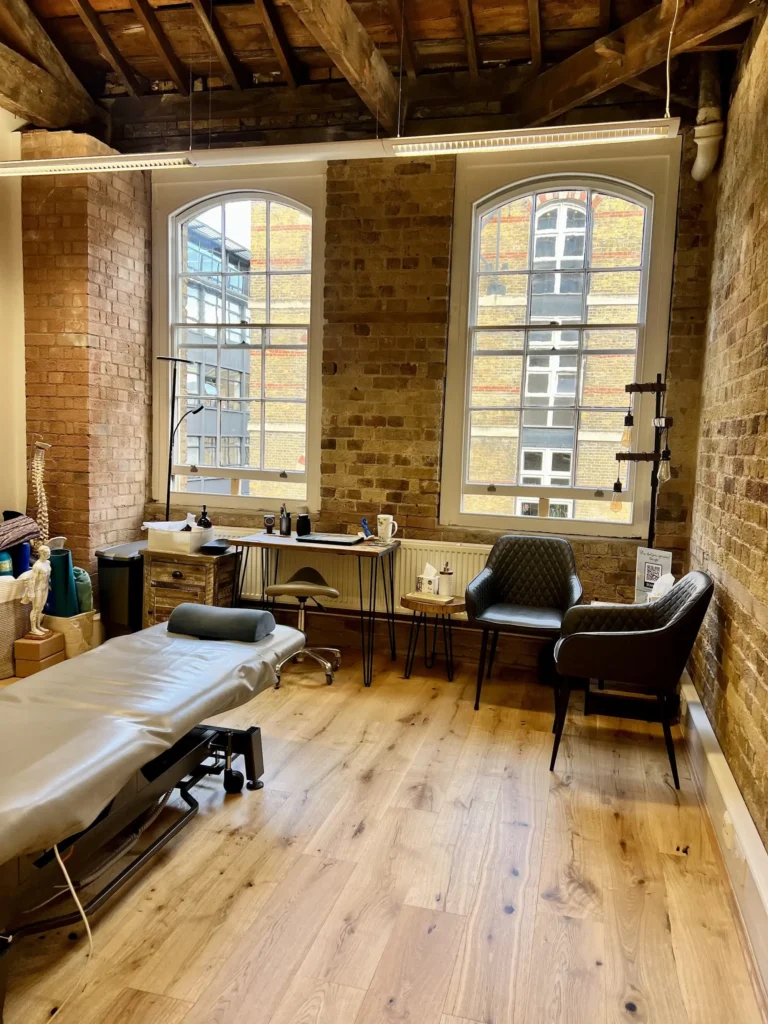Back Pain
Conditions
Back Pain
Back pain is discomfort or pain in the upper, middle, or lower back. Causes include muscle or ligament strain, herniated discs, arthritis, or skeletal irregularities. It can range from a dull ache to a sharp, debilitating pain.
Standard Medical Approach:
- Diagnosis: Physical exams, imaging tests like X-rays, MRIs, or CT scans.
- Treatment: Pain relievers, anti-inflammatories, Physiotherapy, injections, and sometimes surgery.

Hito Holistic Approach:
Diagnosis: Comprehensive assessment including physical, neurological, myofascial, visceral, postural, energetical, emotional, and lifestyle factors.
Treatment: talking about back pain is quite general since there are different part of the spine which could be involved. If the pain is on thorax, on the back of the ribcage, below the neck, then it is called upper back pain. If relates to the end of the thorax, around the last ribs and the beginning of the lower back then it is called middle back pain. If it is fully below the thorax but above the buttocks, then it is a lower back pain. If it is around the buttocks, it is a gluteal issue but if overall around the triangular bone at the level of the underwear in between the gluteus then it is a sacral pain. If it is at the very end of the spine and below the buttocks, then it is a coccygeal pain. From a holistic perspective all the parts above are related to different things.
The Upper back viscerally corresponds to the lungs and heart in its upper part, to the stomach, pancreas, suprarenal glands and liver in its middle part and to the small intestine in its lower part. So, any malfunction in these organs can generate a pain in the corresponding area as well as the opposite like a misaligned spine in a certain point can generate an organ malfunction on the long term. A poor posture in front of the desk, leaning towards the screen can affect the upper back with tightness and soreness in his muscles. A bent upper back usually relates to a depressed mindset or a low self-esteem. In ayurvedic medicine upper back corresponds to the hearth chakra and the ability to give and receive love or letting go someone who left us or the ability to give love without expectations to receive it back in the same way. In Traditional Chinese Medicine (TCM), the pain along the spine mostly corresponds to the bladder meridian which has physical and emotional points. However, there is also a connection with the meridians of the heart, pericardium (the membrane of the heart) and small intestine.
The middle back corresponds to the last part of the thorax, the diaphragm as respiratory muscles and viscerally to the small intestine. However, in the ayurvedic medicine corresponds to the Solar Plexus or third chakra which relates to the balance between the person and the earth. This can translate as any form of balance like between rest and work, sleep and awake time, body hydration, quality of nutrition, lack or excess of physical activity, balance in the relationships, judgemental environment, low self-esteem but also anxiety, skin problems, tendonitis, body inflammation, etc. The solar plexus corresponds mostly to stomach (struggling to digest life events), spleen (worrying thoughts) and liver (anger) and, in fact, in Chinese medicine relates to stomach, liver, conception and governor, bladder meridian.
The lower back, which is the lumbar spine, is viscerally connected to the large intestine. Emotionally to past, even forgotten trauma related to abandonment, abuses, betrayal etc. In ayurvedic medicine corresponds to the second chakra (sacral chakra) related to pleasure and enjoyment, sexuality and reproduction, past trauma. In Chinese medicine this is still connected to the conception (yin), governor (yang) and bladder (fluid balance) but also to spleen (immune system) and pericardium (constrictor or releaser of the heart).
The sacral area is viscerally connected to the kidneys (fear), urinary and reproductive organs and as muscles to the gluteus. Emotionally relates to the sense of responsibility and feeling in charge of huge commitments. In ayurvedic, is in between the sacral and the base chakra while in Chinese mostly corresponds to the bladder points.
The coccygeal area connects to the pelvic floor as the pubis on the front. Both in ayurvedic medicine correspond to the first or base chakra. This chakra relates to family, roots, survival instinct or status, grounding, bones and bone marrow. In Chinese medicine corresponds to the bladder and kidney meridian. Emotionally to the lack of roots, missing family, survival status, fears, lack of grounding.
Moreover, all these areas not only can get affected or affect the corresponding organs but also get affected entrapment due to previous surgeries in the same area. A very clear example is the C section that tents to give lower back pain after one or two decades. A surgery at the level of stomach liver or gallbladder can affect the middle back. A heart surgery can internally “pull” the upper back.
Holistic treatments include myofascial release of the restriction and entrapments or resetting the muscle tension along the spine. Craniosacral therapy can be great to rebalance the natural spinal rhythm while acupressure and acupuncture can re-balance the meridians. Chakra healing could rebalance the chakras. Other options are clinic massage, lymphatic drainage, specific stretches, strength and postural exercises, Pilates and yoga poses, mindfulness practices like meditation, breathwork and journaling to reduce stress and improve oxygenation. There are meditations made specifically for grounding or to let go past trauma etc.
